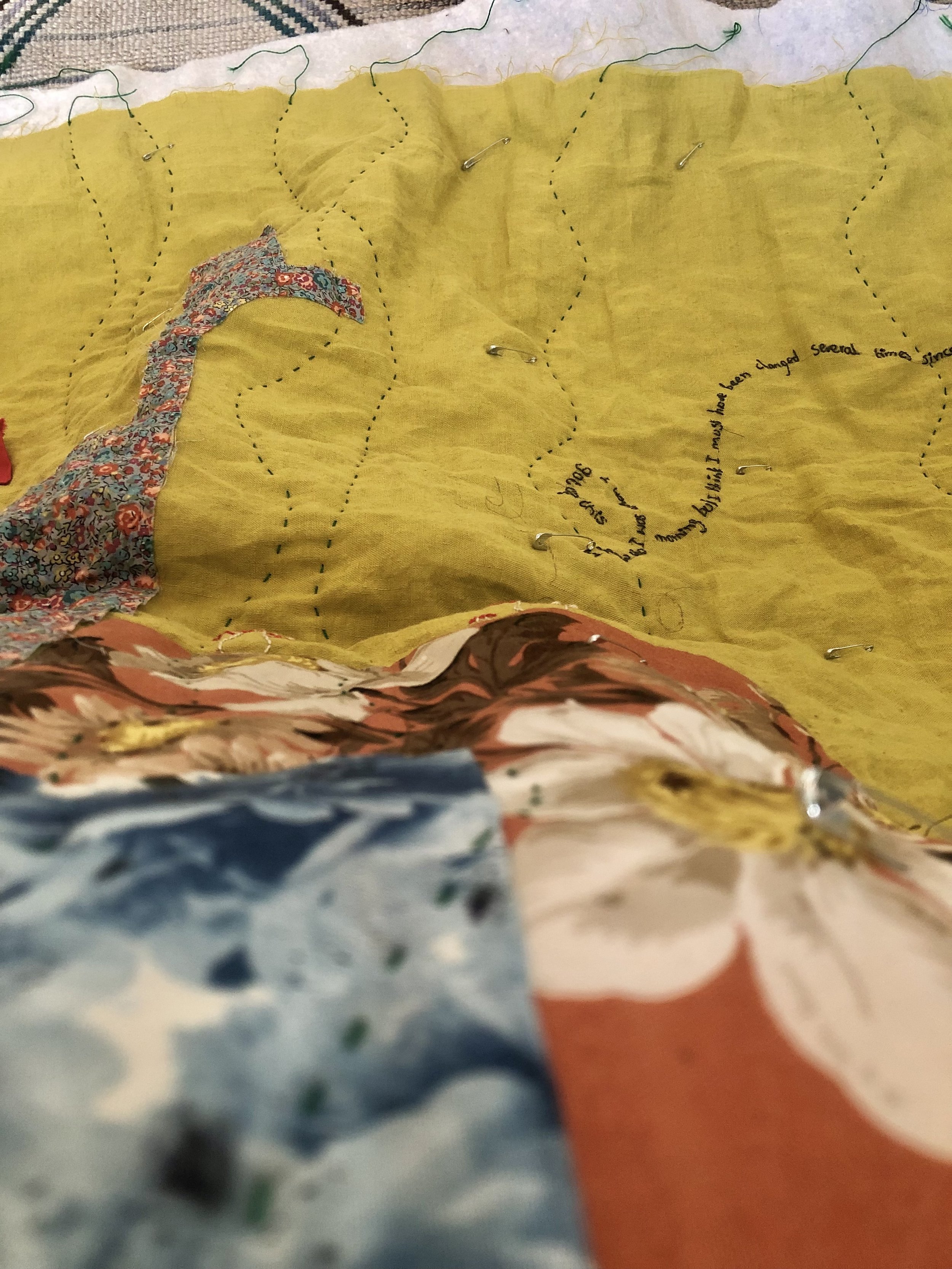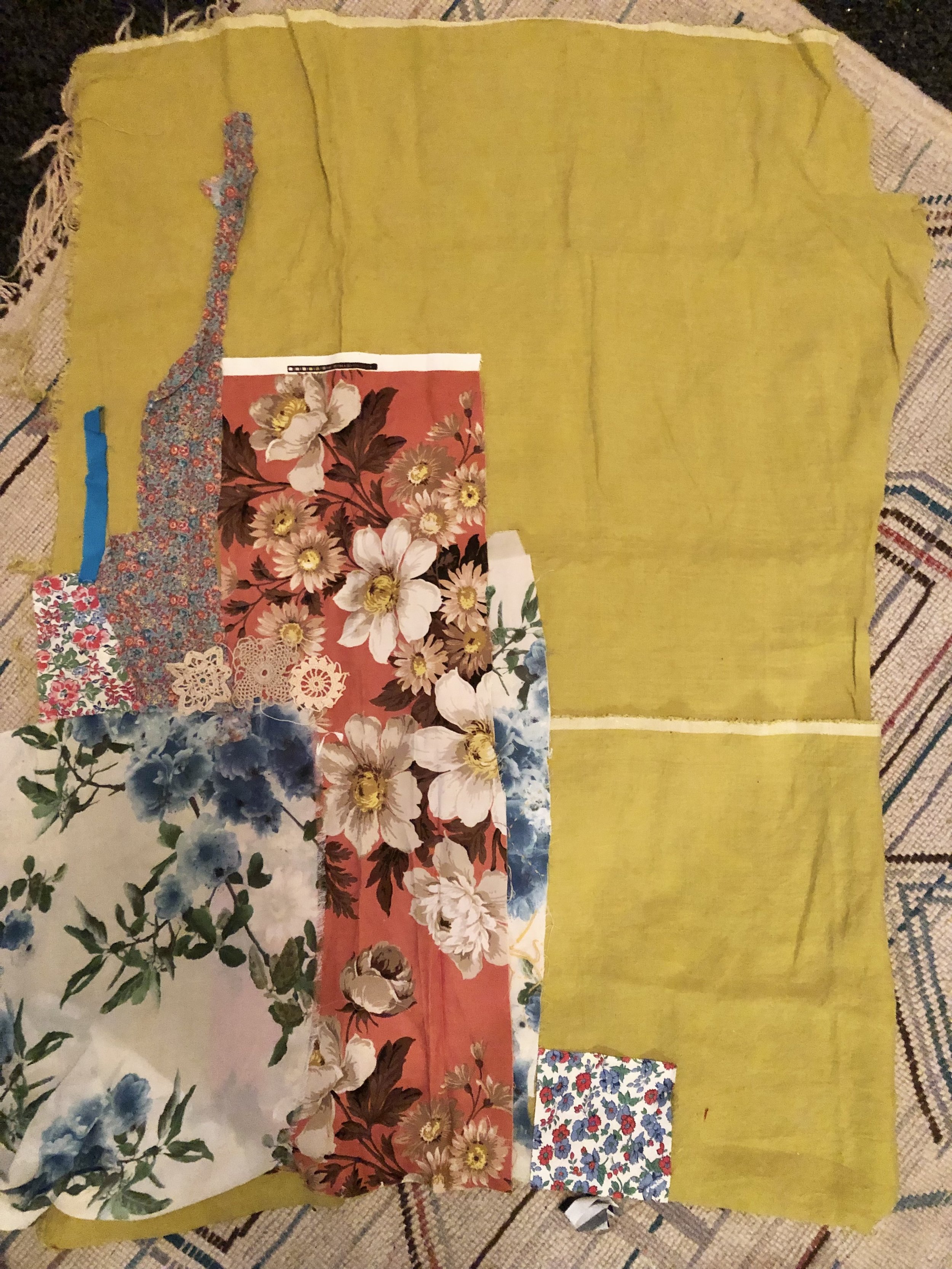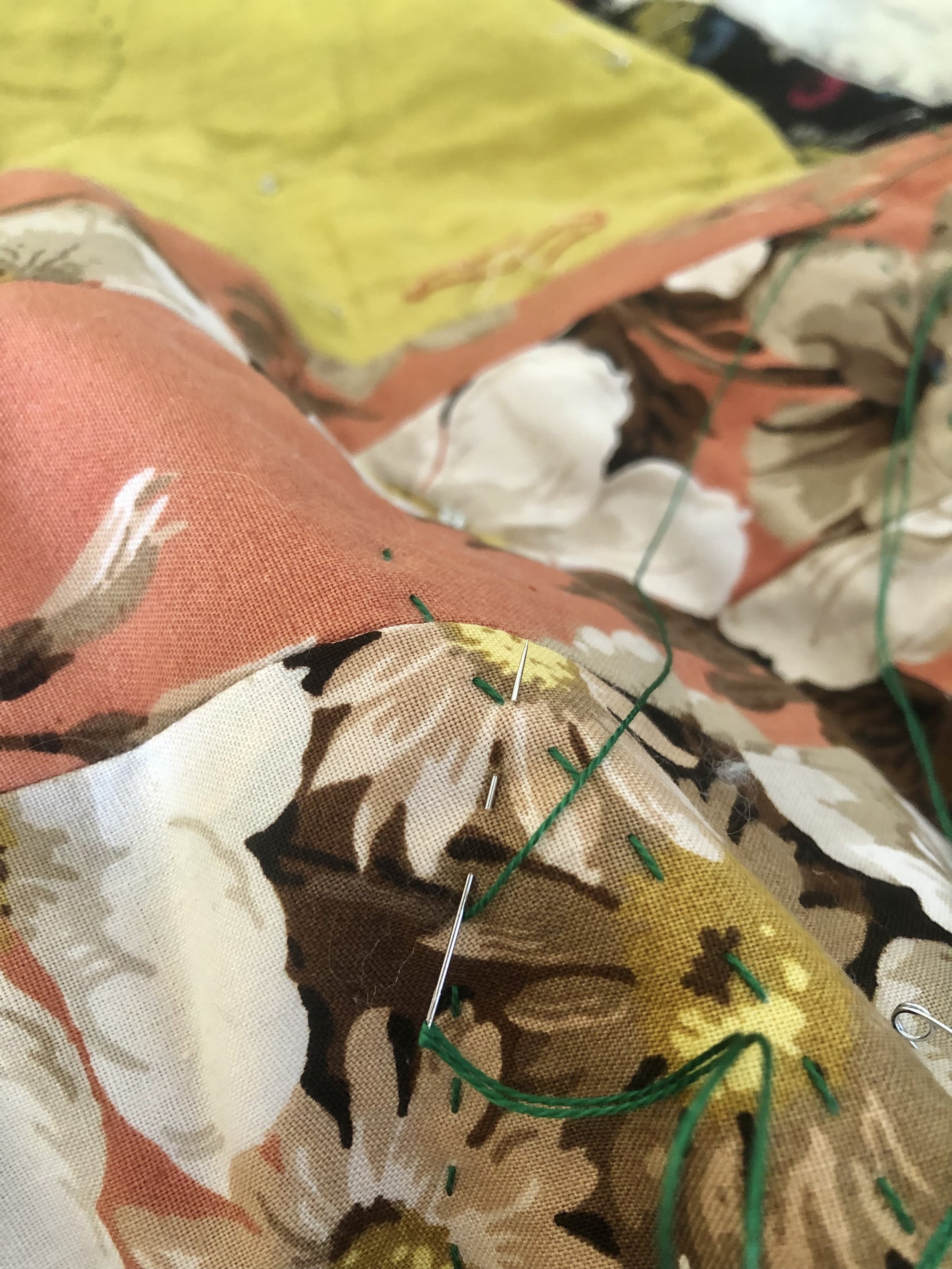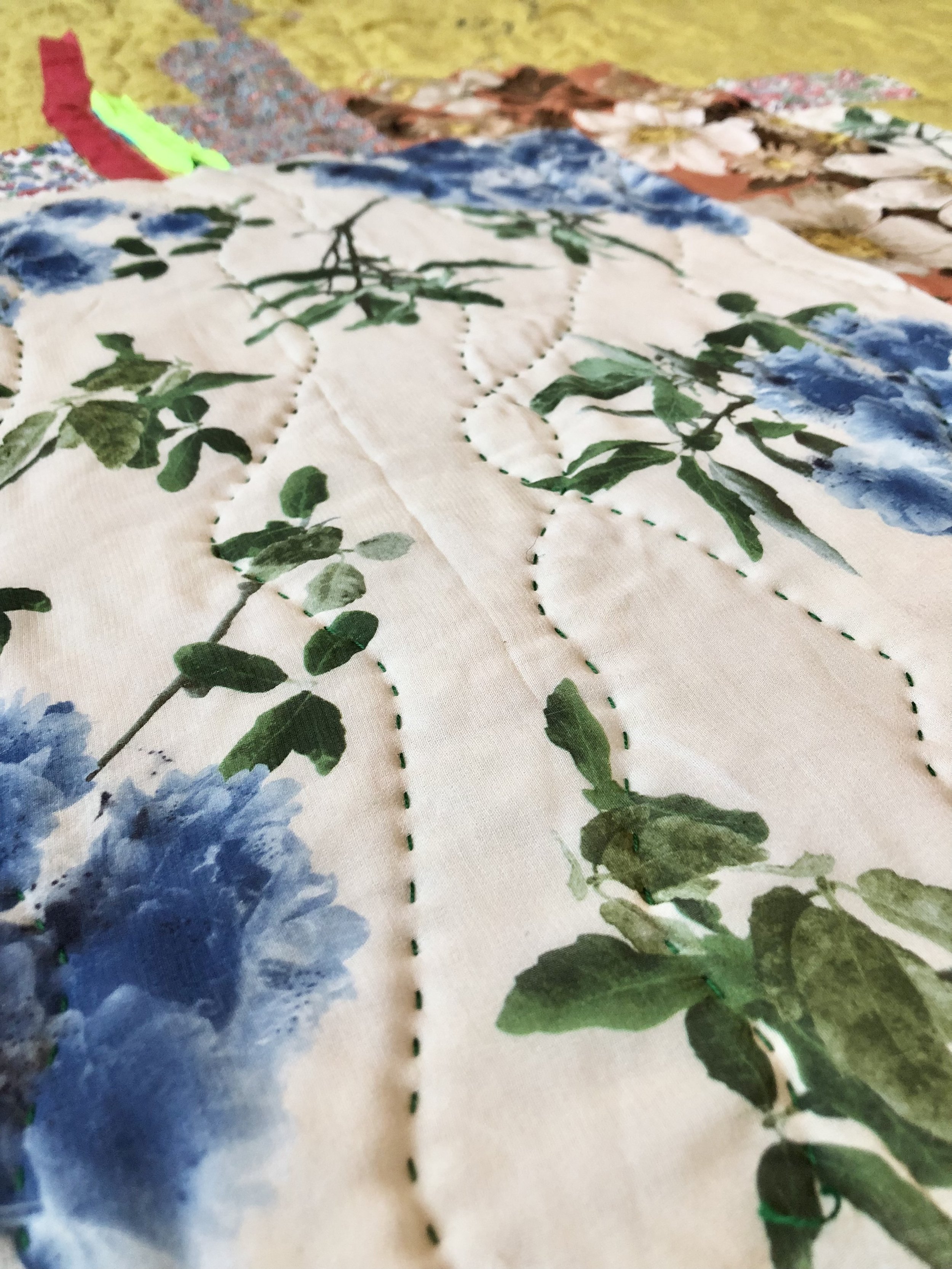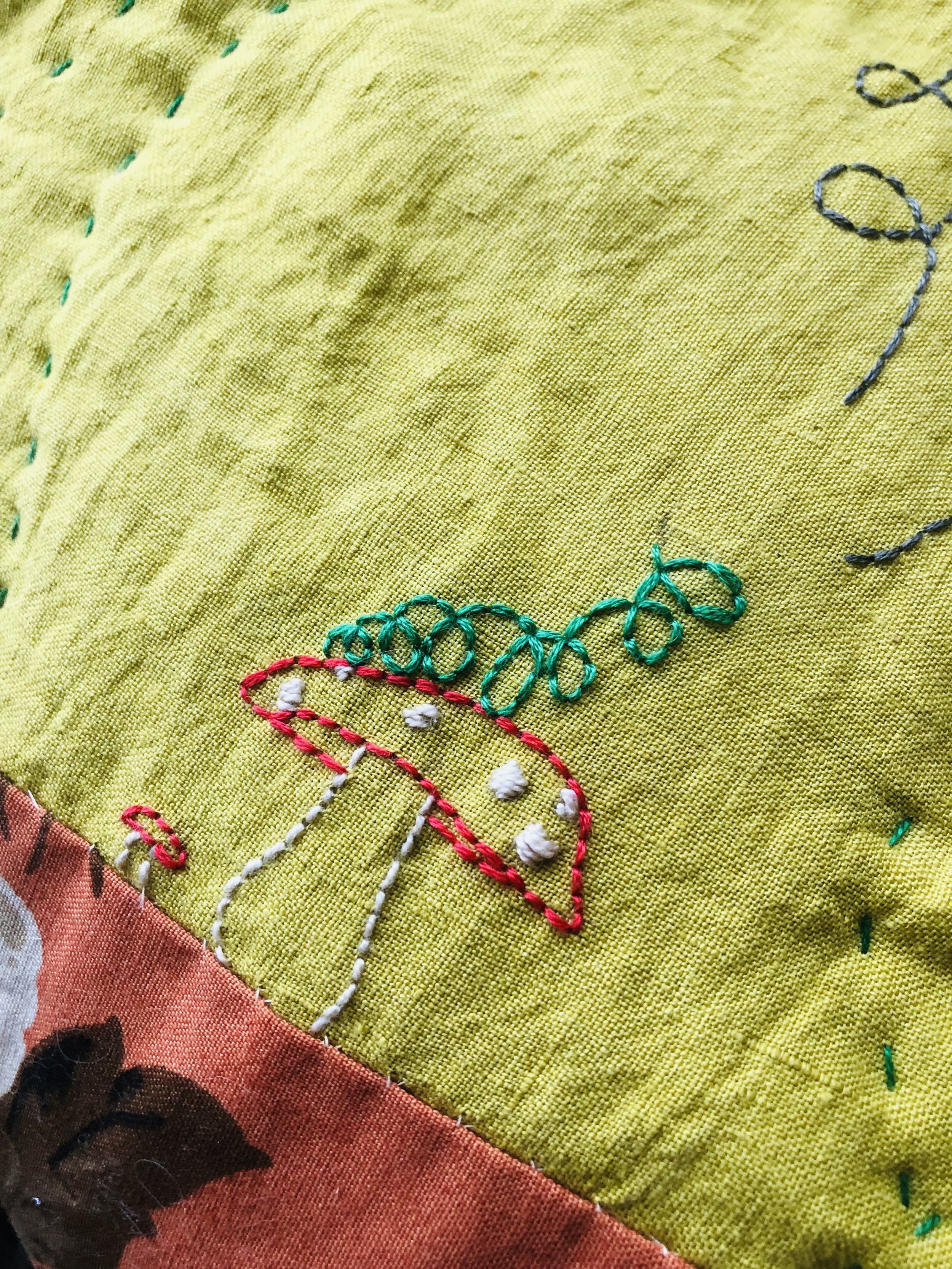Guy In a Boilersuit Playing the Piano
Lila Chatfield
“And I was like, Ahhhh mushrooms! That’s what this piece is missing! I need some mushrooms!”
Interview by C. VanWinkle
December 14, 2021
Okay, let’s start at the beginning. What was your prompt? What did you respond to?
I had a piece of music which was about two minutes long and it was sort of jazzy. But the first thing I thought of when I listened to it was The Jungle Book. It had some sort of wind instruments, and it had some mystery to it. I played it to my husband and, without me prompting, he went to India as well, which was quite interesting. Maybe he was picking up on this Jungle Book vibe too. I was excited because I really loved it, and I was relieved because it really spoke to me, sort of immediately. I listened to it a lot, probably ten or fifteen times over a few days, to really get a feel for what it was and see how my response to it evolved, which it did. I went in quite a different direction to what I started out with.
Did you have something specific in mind right away and then do something different?
Yeah. At first, I was thinking of some kind of amazing, beautiful thing being revealed, and it made me think of this potato stone that I had when I was growing up. It was this ruffled stone that looked a bit like a potato, and then you opened it and it was all these amazing crystals, like a cave of crystals. It’s so sparkly and I still have it. It must be pretty special to me because I haven’t kept that many things from back in the day, but I did keep the stone because it was just kind of magical. I thought I was going to go with something like that, but when I pulled out my fabrics, that’s not what came. What came was like a garden, this strange, magical garden. So that’s what I went with in the end.
The materials that you have to work with will certainly make a difference.
Exactly. I like to use what I have, rather than go out and buy materials specifically for a project. I like to be limited by what I have in my stash because I find it helps me focus. Otherwise, if I’m just using my imagination, I find I get really overwhelmed and I’m like, Oh my God, I need to get that fabric or that thing, and then the wealth of possibilities is just completely overwhelming. Whereas if I just stick to what I’ve got and I think, Right, well, this is what I’ve got to work with, it can take you in some really interesting directions.
Was it very important to you to stay close to the source material? Did you try to integrate that into your piece or was that just a jumping-off point?
Well, at first, I thought I was going to make almost a portrait of the source material, but it ended up being a jumping-off point. The turning point for me was when I showed what I’d been making to my three-year-old son. I like to get his opinions because he’s always got some interesting ideas. He saw one of my fabrics and said, “Those look like mushrooms, Mummy.” And I was like, Ahhhh mushrooms! That’s what this piece is missing! I need some mushrooms! Because I find mushrooms very interesting. They’re these strange creatures and you never know when they’re going to pop up. And they’re psychedelic as well, some of them, and I felt that the piece had quite a psychedelic feeling to it. Kind of woozy and a bit weird and unexpected.
So I went down the mushroom route and it brought up this experience that I had, which was not on psychedelics, but it did have kind of a psychedelic quality to it. I was walking through a train station one day, just coming back from work. They have this piano in our train station. I’m not sure if it’s still there, actually; I haven’t been for a very long time. But they had this piano at the time, and I heard this amazing music. I’m not super familiar with classical music, so I don’t know who the composer was, but it was really beautiful and really competently played. When I looked and saw who was playing, it was some guy in a council boilersuit and I was like Whaaaaaaaat? I was catapulted into this whole, bizarre shift in consciousness where all my expectations of humans were changed. This guy is making this amazing music, and if I’d see him walking down in the street, I just would not expect that from him. It was just, I suppose, a moment of connectedness and love, in a way. It felt like my consciousness went up a level. I went from going to work to having this beautiful surreal experience. It was kind of profound.
Is that what the line of text in your piece is referring to? It says, “I know who I was when I got up this morning but I think I must have been changed several times since then.”
It comes from Alice in Wonderland, and I felt like it captured that shift. I like having text in in my work because I think it draws attention and it adds a different layer of interpretation.
Is it usually a quote from literature? Or an idea in your head? Where does the text come from?
It can be quotes from literature, lyrics from music. Recently, I included part of a conversation I had with my husband, where I found out that he doesn’t think in sentences, which is really weird to me. I have actual conversations in my head all the time. People see me walking down the street and they give me a weird look and I think, Oh no, I’ve been mumbling again. Cringe. But my husband doesn’t have that. Of course, I do have thoughts that are more nebulous and end up popping into my brain as an image or something, but my husband doesn’t seem to have any inner monologue at all. His brain is all of these fuzzy, nebulous concepts that just pop in. I’d love to spend some time actually in his head. But what I loved about that was that we’ve been together for 15 years and I only discovered that recently, which is quite fundamental. The sentence was, “Some people don’t think in words.” It was amazing to me to learn something so fundamental about my partner, whom I thought I knew everything about. That was nice for me to realize because it’s like a new landscape of a person that’s ready to be discovered.
This line says, “I must have been changed several times since then.” Changed by what?
I think, with regards to that experience I had, I was changed by the experience of that music and that man playing it. It made me rethink how I perceive human beings that I meet in the street, and it helps me imagine that people have got all sorts of joys and fears and talents. It helps me feel more connected to people I don’t know, in a way. I think that was the change. For Alice, she’s changing states all the time in the book. And I don’t know if there’s a sort of sexual undertone for Alice? Perhaps there is. I’m sure there could be many readings like that. But I think Alice is growing up throughout the book. It’s like a strange coming-of-age book. I felt like that moment with that man in the station was a sort of coming-of-age moment for me.
How does this piece relate to the rest of your work?
I often draw upon a personal experience because, for me, that’s the best starting-off point as a line of inquiry. I think it helps add authenticity by grounding it in something real. And then I can hang other things around it and hopefully make it a bit more relatable to… the human condition? [laughs] That sounds really pompous! Make it more relatable to people who don’t know me or want to have their own experience of my work and see how it relates to their own experiences.
Is your work usually this big?
Yeah, I do often work quite big. I suppose it’s roughly 120 by 130 cm, something like that. I find there’s a lot of opportunity for saying what I want to say and playing around with things. I do sometimes make smaller, experimental pieces where I’m just trying an idea out. But yeah, I like to work big. [laughs] Yeah, make of that what you will. I find I can add lots of little details, and also work with negative space.
This just seems very labor-intensive to me. This coming from someone who doesn’t quilt.
It did take quite a long time in hours. I don’t know, maybe 15 or 20 hours, perhaps? All the quilting was hand stitched. I only hand quilt. I don’t have a long arm quilting machine because they cost tens of thousands of dollars, I think. And I just love the texture you get from hand quilting. You get the big stitches that really dig into the fabric, so you get the luscious, kind of puckered effects. I like the slowness, as well, with hand stitching. And the feeling of the needle against my hands. I’ve always got tender little fingertips because of that, but it’s just a sensory experience that can’t be matched with a machine for me. Plus, I get to listen to podcasts and watch a bit of Netflix while I’m doing it. So, you know, it adds to the enjoyment.
If you tend to work big and you tend to work by hand, how was it working to a deadline? Did that worry you?
It did a little bit, but I have an awareness of how long things take, and so I knew that I would get it done in time. The way I managed that was by doing some really simple quilting lines, so they all run up the piece rather than going around. I could easily do that quite quickly. And the quilting lines were free sewing. I didn’t mark any of the lines. You know, there are different ways of making something a bit quicker. The quilting pieces that I put together were quite big as well, and I pieced those by machine. So, I’ve worked out ways where I can be a bit quicker. Also, I’m a mother of two, so I don’t tend to do that much in the evenings apart from my work. And it’s work that I can pick up and put down. That’s the benefit of quilting and that’s partly why I do it. I do it from home and my children aren’t bothered by me doing it. They don’t want to climb all over me as they would if I was on a laptop, doing some sort of digital drawing or something. They would be all over that, but with quilting, they’re sort of like, Oh, Mummy’s got a needle, better leave her alone.
What is your advice to someone else who might be approaching this project?
I would say to look at the piece you’ve been given, or listen to it or read it, several times over. I probably wouldn’t get started immediately. I’d probably wait for things to percolate a little bit over a couple of days, even though with a tight deadline you might be tempted to get started immediately. I definitely wanted to do that. I was like, All right, I want to get my fabrics out and I want to be stitching right now! Instead, I decided to wait and let the ideas sink in. I find I work best if I leave some things to my subconscious and let it churn without me having my inner monologue to tell me stuff about it.
Call Number: C62MU | C64VA.chaGu
Lila Chatfield is an artist focused on quilts and mending, living in Brighton, UK. Her work tells stories of memory, place, mental health, relationships and love, looking at human experiences that range from the mundane to the sublime. She plays in an intuitive, improvisational way, often with discarded or vintage cloth and found objects, gently pushing the boundaries of what is and isn’t a quilt. She hand sews almost exclusively, meaning that her work, which combines both abstract and figurative composition elements, has an organic feel that embraces the joy of the imperfect and the unexpected.




